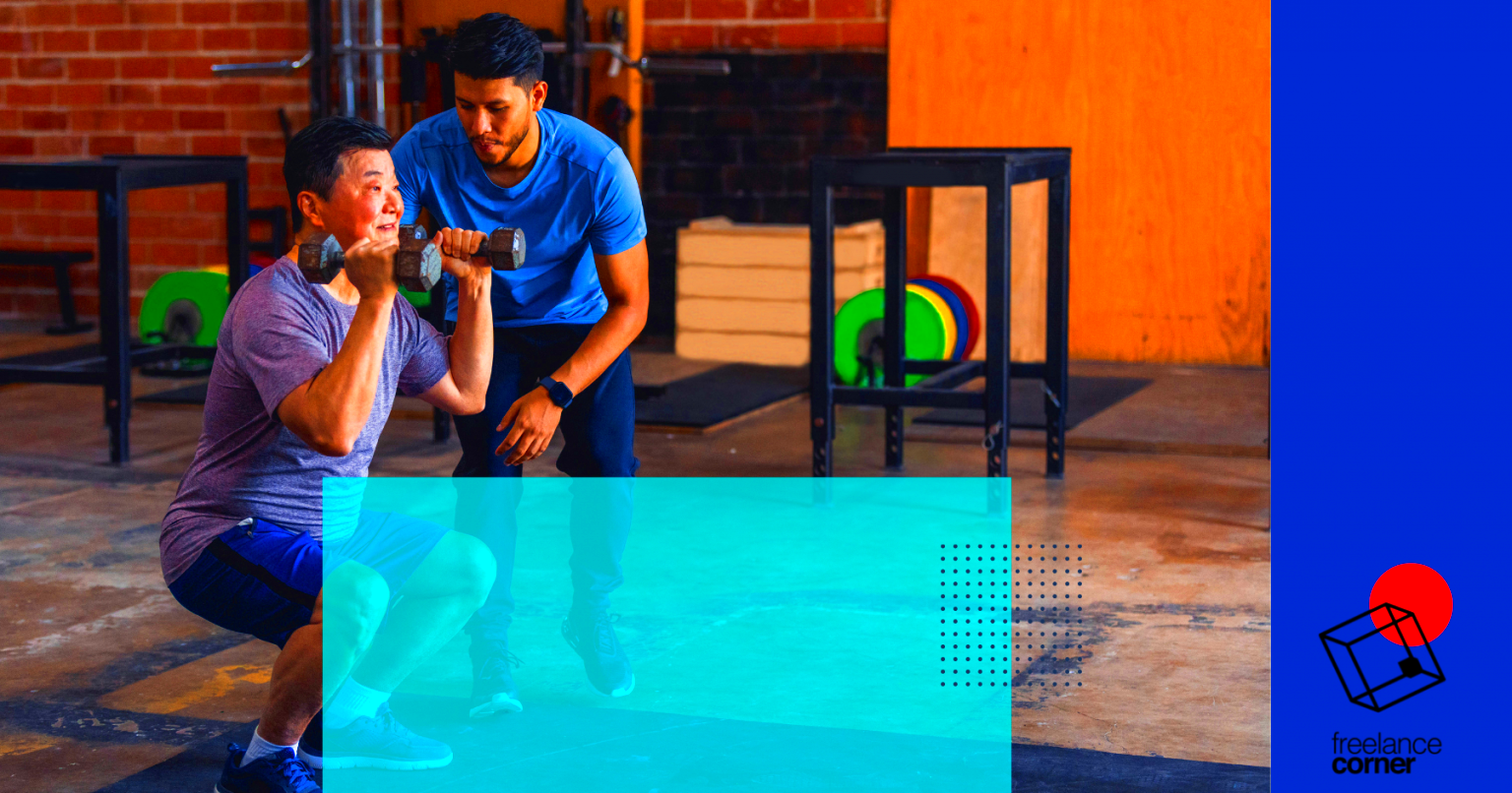Starting out as a freelance trainer is not just a career shift; it's a way of life. Unlike conventional jobs that come with a set routine, freelancing in personal training offers you the flexibility to create your own timetable. I recall feeling thrilled at the thought of being my own boss when I embarked on this journey. You answer to no one, except for yourself and your clients. Nevertheless there are hurdles along the way. The silver lining? If you're truly passionate about fitness it hardly ever feels like a job.
Benefits of Becoming a Freelance Personal Trainer

There are plenty of reasons why individuals are opting for freelance training. The perks like flexibility and financial independence are tough to overlook. Here are some of the things I personally appreciate about it.
- Flexible Schedule: You can train clients at your own pace. I’ve been able to take vacations without asking for time off, something I couldn’t imagine in a 9-to-5 job.
- Be Your Own Boss: There’s nothing like having complete control over your work. From deciding how much to charge to choosing clients, it’s empowering.
- Personal Fulfillment: Seeing clients transform over time is incredibly rewarding. It's not just about physical changes but also about mental strength.
- Work From Anywhere: Whether it’s in a gym, park, or even online, your office is where you want it to be. I’ve even held training sessions on a beach once!
Its not solely about earning income; its about crafting a lifestyle that aligns with your preferences.
Also Read This: How to Work as a Freelance Real Estate Agent
Skills You Need to Succeed as a Freelance Personal Trainer
Diving into freelancing isn't a move you can make without having the necessary skills. Here's a lesson I picked up through experience.
- Communication Skills: You need to be able to explain exercises clearly and motivate clients. A good rapport goes a long way in retaining clients.
- Time Management: Balancing multiple clients can be tough. In my early days, I struggled to manage my time efficiently, and it affected my work. Learning how to create a schedule that works for both you and your clients is key.
- Marketing Know-How: It’s not enough to be a good trainer; you have to market yourself. Creating social media content, designing workout plans, and even networking—it all comes into play.
- Adaptability: Every client is different. You’ll come across people of all ages, fitness levels, and goals. The ability to modify your training techniques based on the individual is critical for success.
Working as a personal trainer involves more than just fitness workouts. It's about fostering connections handling your business and continuously expanding your knowledge. If you possess these qualities or are open to honing them you're heading in the direction.
Also Read This: Where is the Buyer Request Option in Fiverr?
How to Build Your Personal Training Brand
Establishing a brand as a freelance coach goes beyond having nice visuals or clever taglines. Its about revealing your true self and your values to others. When I embarked on this journey I believed that a well curated Instagram profile and some appealing pictures would suffice. However it runs much, on trust, reliability and genuineness.
To start off it's important to pinpoint your specific area of expertise. Are you targeting weight loss, strength building or perhaps catering to seniors? Once you establish that everything else will come together smoothly.
- Consistency is Key: Whether it's social media posts or workout programs, stay consistent. When I stuck to a schedule for posting tips and client success stories, my audience grew steadily.
- Create a Unique Identity: Don’t be afraid to share your own fitness journey. I used to feel shy about sharing my personal struggles, but the moment I opened up, people started connecting with me on a deeper level.
- Leverage Testimonials: Nothing speaks louder than a satisfied client. A simple before-and-after story, or even a heartfelt testimonial, works wonders in building credibility.
- Show Your Expertise: I started writing fitness blogs and shooting videos with simple home workouts. Sharing valuable content helped establish me as an authority in the field.
Keep in mind that establishing a brand is a process that requires patience but the rewards are definitely worth it. Its what distinguishes you from the competition in a saturated marketplace.
Also Read This: When I Close My Fiverr Account, Will My Reviews Still Show?
Finding Clients as a Freelance Personal Trainer
Securing clients can be quite challenging in the world of freelancing and I have to admit it was tough for me at first. I was enthusiastic but had no idea how to catch the attention of potential clients. Here’s what proved effective for me.
- Word of Mouth: My first few clients came from my friends and family. Once they saw results, they started referring others. Never underestimate the power of word-of-mouth marketing, especially in India where community ties are strong.
- Social Media: I dedicated time to posting free tips, quick workout videos, and even healthy recipe ideas. Slowly, I started getting messages from people asking for personal training sessions. Platforms like Instagram and Facebook are perfect for showcasing your skills.
- Local Gyms and Fitness Centers: I reached out to local gyms offering freelance services. Many are open to partnering with trainers on a freelance basis. You never know until you ask!
- Online Platforms: Websites like Fiverr and Upwork offer freelance trainers an opportunity to market their services. It’s a great way to start if you’re open to training clients online.
Being patient and staying persistent are crucial. It may take some time to start things moving but once you do the momentum keeps growing.
Also Read This: What is Success Score on Fiverr?
Setting Your Rates and Managing Payments
Oh the challenging aspect is determining the fee to charge. I recall when my initial client inquired about my rates I spontaneously mentioned an amount. That was a blunder! Establishing rates as a freelance trainer demands careful consideration.
This is how I figured out to set up my prices.
- Research the Market: I spent time looking at what other trainers in my area were charging. It’s important to stay competitive but also value your time and expertise.
- Consider Your Experience: When I started, I priced my services a bit lower because I was new. As I gained more experience and client success stories, I slowly increased my rates.
- Offer Packages: Some clients prefer committing to a monthly plan. I offer discounts for clients who book a package of 10 sessions or more. It gives them an incentive to stick with the program, and I have a more predictable income.
Handling payments posed a hurdle for me at first. Here’s how I overcame it.
- Online Payment Systems: Services like Google Pay or Paytm make transactions smooth. Plus, it’s easier to keep track of everything.
- Invoicing: I use simple apps to send professional invoices. This helped me stay organized and avoid those awkward conversations about payments.
When it comes down to it make sure your rates align with your value and dont hesitate to have open conversations about money with your clients. Its all part of being in charge of your own venture.
Also Read This: Can You Sell Physical Products on Fiverr?
Balancing Your Schedule and Client Workload
When I started out as a personal trainer I assumed that the biggest challenge would be bringing in clients. But I quickly realized that juggling all of them was even more challenging! One week I had no clients and the next week my calendar was completely booked. Dealing with this kind of erratic workload can be quite tricky. However with time I've picked up a few strategies to help me handle it better.
Setting boundaries is crucial right from the start. In the past I would agree to sessions at times to please my clients. However I soon discovered that it took a toll on me both mentally and emotionally. Now I stick to specific time slots for sessions and it has had a positive impact. Clients tend to honor the schedule when you show respect, for your own time.
Here are some tips that worked for me:
- Prioritize Your Tasks: Not all clients are the same. Some may need more attention than others. I plan my day based on who needs more guidance, and who can manage with less input.
- Use a Calendar: Whether it's a physical one or an app, keeping track of all your appointments is a must. I use Google Calendar to block out both client sessions and personal time.
- Take Breaks: Initially, I thought more clients meant more success. But too many back-to-back sessions left me burnt out. Now, I always ensure I have breaks between sessions, even if it’s just for a quick chai or a walk.
Juggling clients while keeping a life is doable if you approach your time management with purpose. Believe me, it’s more about the value of moments rather than the number of them.
Also Read This: Does Editing Fiverr Gigs Affect Your Ranking?
FAQs about Freelance Personal Training
Q: Do I need a certification to become a freelance personal trainer?
While it may not be mandatory in every country obtaining a certification can enhance your reputation. Clients tend to be more inclined to trust and hire you when they see that you possess the qualifications. Additionally you will gain valuable insights into training practices.
Q: How do I handle clients who cancel last minute?
A: You'd be surprised how frequently it occurs. That's I suggest establishing a cancellation policy. For instance I impose a fee if clients cancel with less than 24 hours notice. It helps to make sure clients value your time.
Q: Can I do personal training online?
Absolutely! In fact since the pandemic I’ve seen a lot of clients transition to training. You can utilize platforms such as Zoom or Google Meet to hold your sessions. The important thing is to make sure your instructions are clear and that your clients have the necessary equipment ready.
Q: What should I charge as a beginner?
When you’re starting out it’s wise to set your rates lower and gradually boost them as you gain more experience and clientele. I began with a fee but increased it after accumulating success stories and testimonials to back me up.
Conclusion
Embarking on a path as a self employed fitness coach is an experience that encompasses growth and advancement. It's not solely focused on assisting individuals in achieving their fitness goals; it also entails forging connections, recognizing the needs of your clients and striking a harmony, in your personal life. Personally I've discovered that the flexibility and fulfillment this profession offers are unparalleled compared to conventional employment.
Absolutely there will be obstacles along the way be it in attracting clients juggling your timetable or determining your fees. However with the attitude and perseverance you can conquer these hurdles. Keep in mind that the work you invest in today will mold the thriving freelance coach you will evolve into, tomorrow. Its a rewarding journey and every little achievement matters.
Are you prepared to embark on a journey filled with adaptability, personal development and enthusiasm?




